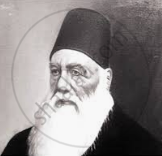Advertisements
Advertisements
प्रश्न
The British Government succeeded in its diplomacy of creating a wedge between the Hindus and the Muslims in India. In this context briefly describe the policy of ‘Divide and Rule’.
उत्तर
The British Government that looked at the Muslims with suspicion after the Revolt of 1857, and favoured the Hindus changed its attitude after the events of 1870. The Government grew apprehensive of the rise of Indian nationalism. It felt doubtful about the safety and stability of the British rule in India. The wave of national unity and patriotism led the British Government to adopt the policy of ‘Divide and Rule’. The British Government encouraged the Muslims of India to demand separate electorate for Muslim representation. In this way the British Government hook upon itself the role of the champion of the Muslims.
APPEARS IN
संबंधित प्रश्न
The partition of Bengal and the formation of the Muslim League were two important events that had an impact on the national struggle for independence. In this context, explain the following:
Any three factors relating to the formation of the Muslim League.
Who presided over its session at Dacca?
Why did the British rulers treat the Muslims with suspicion after the Revolt of 1857?
Give a reason for the establishment of the Mohammedan Anglo-Oriental Defence Association in 1893.
Who started the Ahrar Movement?
Why did Sir Syed Ahmed Khan advise the Muslims not to join the Congress?
Why did the Muslims find the partition of Bengal suited their interests.
How did the educational backwardness of the Muslims lead to the growth of communalism in the early years of the 20th century.
Discuss the role of Sir Syed Ahmed Khan in the formation of Muslims League.
Answer the following:

(i) Name the famous Muslim reformer in the picture.
(ii) Name the educational insitution founded by him. What was his objective?
